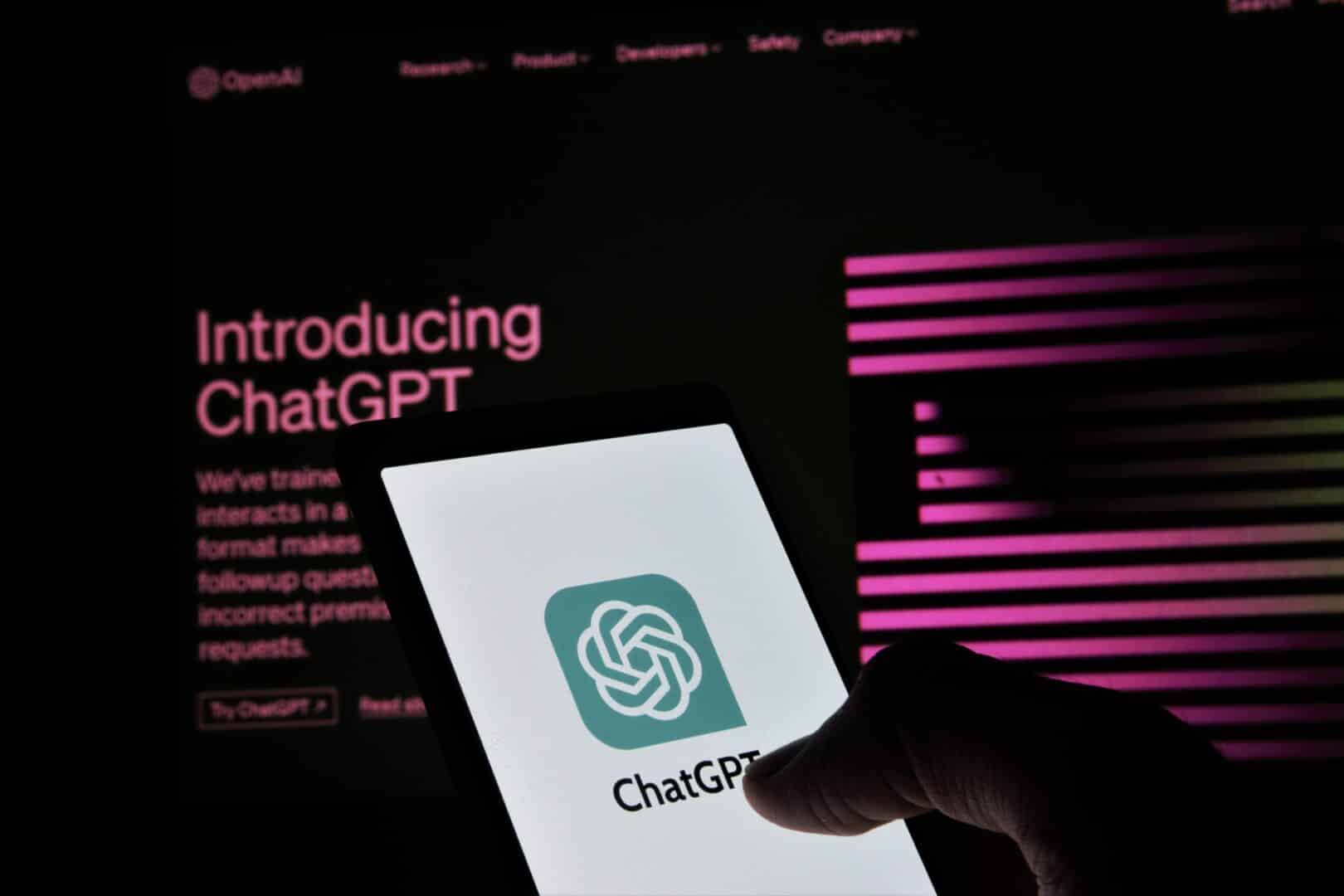Let’s face it… once artificial intelligence became less about the movie Terminator and more about our everyday lives, we all had questions. I looked up some of the most common search queries for AI. This is what people are searching:
- How does artificial intelligence work?
- How to use AI
- How to invest in AI
- Pros and cons of artificial intelligence
- Was this written by AI?
- What jobs will AI replace?
- Will AI take over the world?
I must admit, that last one feels just a bit dramatic — but at the same time, it’s a real concern for people. AI and smart technology has become so pivotal to our lives, we can’t imagine life without it. Think of the Alexa devices in our homes and the smartphones at our fingertips. Everything from social media to search engines to Netflix uses AI to personalize content for users.
As AI becomes more and more of a factor in our daily lives, it’s also becoming an even bigger factor in how brands market to consumers. AI in marketing is emerging as the latest way to understand our target audience, cut down time, and streamline processes.
Let’s take a closer look at AI, the pros and cons of artificial intelligence, and tips for making AI part of your marketing strategies. And most importantly, answer the burning questions that are top of mind right now: Is AI really worth all the hype? And will AI steal my job as a content creator or marketer?
Pros and Cons of Artificial Intelligence
Pros of AI in Marketing
- Content Creation and Recommendations: A Jasper survey identified the top three benefits of AI in content creation: improving existing content, generating new ideas, and building content outlines. AI can whip out content in seconds, as well as help generate ideas when experiencing writer’s block.
- Efficiency and Productivity: AI’s ability to automate repetitive tasks is a game-changer for marketers. By taking over mundane activities, AI allows marketers to redirect their focus towards more strategic and creative endeavors. Imagine how much time you could save by no longer having to handle tedious data entry or schedule routine social media posts.
- Improved Customer Insights: Gathering and analyzing customer data can be overwhelming and time-consuming, but not for AI. AI can efficiently handle and analyze vast amounts of customer data. These insights help in understanding consumer behavior and preferences for creating more effective marketing strategies.
- Personalization and Targeting: As any marketer knows, personalization and targeting your specific buyer persona increases engagements and conversions. AI analyzes tons of data to create personalized experiences. This can help you in targeting the right audience with content tailored to their specific preferences.
- Predictive Analytics and Forecasting: AI’s predictive capabilities are invaluable for making informed marketing decisions. By predicting market trends and consumer behavior through data analysis, marketers can proactively adjust their strategies, staying ahead of the curve.
Cons of AI in Marketing
- Bias and Fairness: AI algorithms can inadvertently carry biases from historical data or from sources. As marketers, we will need to oversee AI to ensure fair and ethical marketing practices.
- Data Privacy and Security Concerns: Collecting and analyzing consumer data is an AI strength, but it also raises ethical concerns. It’s up to us as marketers handle this data responsibly, and ensure we meet privacy and security standards.
- Lack of Human Touch and Creativity: While AI can be a great help, it cannot replace or replicate the human touch or our storytelling abilities. Creativity and originality, the core of effective marketing, can be stifled and flat if marketers just rely on AI-generated strategies and content. You must find the right balance to keep authentic customer engagement.
- Research Shortcomings: Despite all its capabilities, AI lacks fact-checking abilities and relies heavily on the data you provide. It cannot conduct in-depth research like a human creator, which is why human oversight is so critical, especially for research-heavy projects.
Examples of Brands Using AI in Marketing
Amazon
Think of how often you or your loved ones turn to Amazon to purchase products. Amazon has revolutionized the way we shop as consumers. They also lead the pack in using AI and machine learning for predictive analytics, which impacts their sales forecasting, supply chain efficiency.
Amazon employs AI algorithms that analyze historical sales data, seasonal trends, market dynamics, and so on to predict future sales and product demand. This allows for efficient management of inventory, shipping, distribution, and delivery processes.
When you use Amazon’s search bar, AI makes sure users receive relevant search results. And the ads you see while you’re scrolling are also AI-driven. Amazon displays advertisements to users based on their preferences and behaviors. This personalization enhances the shopping experience, increases customer engagement, and often leads to additional purchases.
By leveraging AI for predictive analytics, Amazon streamlines its marketing strategies and operations. This all contributes to Amazon’s position as a leader in e-commerce and customer satisfaction.

Netflix
A big part of why so many users love Netflix is logging in and having a highly personalized experience. When a user signs up for Netflix, their AI platform begins to build a unique profile for that user. The system starts collecting data on what genres the user enjoys, which actors they prefer, the viewing frequency, and much more. This data forms the foundation of the personalization process.
Netflix also employs AI collaborative filtering, a common technique in recommendation systems. It matches a user’s preferences and behavior with those of others who have similar tastes. For example, if User A and User B both enjoyed similar comedy series, the algorithm may recommend shows that User B has watched and User A has not.
The best part is their AI system continuously learns and adapts based on the user’s interactions and choices. If a user gives a low rating to a romantic drama, the algorithm will reduce the frequency of similar suggestions in the future, improving the accuracy of recommendations.
Through AI, Netflix ensures that each user’s browsing experience is highly personalized. It not only keeps users engaged but influences their decisions, leading to longer viewing times and increased customer engagement.
The New York Times
Even the New York Times, a very content-heavy organization, has discovered how to leverage AI to enhance its content creation processes. The publication has an AI-powered tool fittingly called “Editor” that assists journalists.
This AI tool automatically generates brief news summaries based on the latest and most relevant news articles. It rapidly analyzes large volumes of news content and extracts key information to create concise summaries. Plus, the tool can review existing articles and suggest improvements for clarity, coherence, or relevance, providing valuable feedback to the editorial team.
Similar to Netflix, the New York Times has also leveraged AI to provide content recommendations for readers. AI algorithms analyze a reader’s reading history, the type of articles they engage with, the topics they prefer, and their browsing behavior on the website. Based on this analysis, the platform recommends articles that the reader is likely to find interesting and relevant. All of this together helps the publication streamline their writing, editorial, and consumer marketing processes.
Tips for AI in Content Creation and Marketing
Now that we’ve looked at the pros and cons of AI, let’s see how we can avoid those pitfalls and enhance the pluses, following the lead of brands like Amazon, Netflix, and New York Times. Here’s some of my top tips to help you implement AI in your work to achieve the results you want, in your unique way, just faster!
#1: Support, Don’t Replace
The first thing I noticed when I started writing with AI is that there’s just no personality. It was easy for me to spot AI-written content because it lacked the human touch. Where were the storytelling elements? Where was the unique writer’s voice and style? Where was the in-depth research and fact-checking? Where were the custom designed photos and videos to enhance the article?
Looking at a first trial run of an AI-written article, I felt pretty dang good about myself as a writer and marketer. I remember saying, “This is what people think will take our jobs?”
It wasn’t until later that I learned I was approaching content creation with AI all wrong. AI isn’t built to create full-on content, plain and simple. If you are trying to use AI to write long-form articles, emails, or even books, it just won’t be the same as using a human writer. But that’s okay! Because AI can support the writing process in so many other ways.
Here’s some of the best ways AI can help with content creation:
- Improving existing content
- Generating new ideas
- Building content outlines
Yes, notice that nowhere in there it mentions writing the article for you. But AI works wonders in the ideation process for content and copy — everything from brainstorming potential article topics, to working on an outline with you, to giving you a list of title ideas.
For example, I asked AI the other day to help brainstorm copy for a creative campaign. Its responses inspired my own ideas until I came up with amazing, unique copy in half the time it would normally take.
The trick to getting AI to work for you is to communicate in the language it understands. AI works in patterns and layered prompts. It’s as good as the information and examples you give it. The more feedback and instructions, the better. You can also go back and forth, like any conversation, and be sure to ask at the end if the AI understands your instructions. This is a great way to see if your intentions are getting across and so you can make any adjustments before AI outputs content.
Every content creator will have a different experience using AI. I’ve found what’s most helpful is to try it out for yourself through trial and error. AI is there to make your job easier, but at the end of the day, you still need to put in the work to get the unique results you want.
#2: Human Oversight Is a Must
My next big piece of advice is this: If you are copying and pasting straight from AI, you are using AI wrong.
I get it. It’s ten times easier to just take the content as-is and press the publish button. But AI content is missing so many key elements of what successful marketing looks like. And I predict as more and more AI content floods the market, more and more people will resonate with human-created content. There’s a noticeable difference that people will pick up on. And what ad or article or landing page do you think consumers will click on? That’s right — the one they connect with most.
I heard recently that before AI we spent more time writing and less time editing. Now it’s flipped. We dedicate more of our time to editing and less to writing. But editing is a process that involves a certain level of human skill. It’s the ability to pick out the best pieces of information, to tweak how something is worded, to fix flat transitions, add storytelling and human voice, and more. Including your own research element is especially important — some AI tools will pull fake stats and research to give you a theoretical look at what the content could look like.
Basically, with AI we are still putting in the work, just in a new and different way. Keep this quote in mind from American author C. J. Cherryh as you work with AI content: “It is perfectly okay to write garbage — as long as you edit brilliantly.”
Here’s a checklist to go through when using any portion of AI content:
- Work on readability so the content comes across better
- Fix transitions between sections
- Look for awkward or robotic phrasings
- Add in your own personal voice
- Incorporate stories and real life examples
- Include research and fact-check any existing research
- Check and incorporate SEO
- Embed rich media (pictures, infographics, social posts, video)

#3: Leverage the Right AI Tools
There’s lots of AI systems and tools to choose from: Google’s Bard and ChatGPT are two that always come to mind. But you don’t need to limit yourself! Depending on your industry, specialty, and needs, there’s lots of AI-based tools to help out.
Here’s a quick list of different AI tools you could implement. And keep in mind, more and more are coming out each day! So stay on the lookout for the best AI tool for you.
Generative AI
- ChatGPT
- Copy.ai
- Google’s Bard
- Jasper
Images/Graphic Design
- Artbreeder
- Artisto
- Craiyon
- DALL-E
- Ideogram.ai
- Runway ML
Miscellaneous
- Grammarly (writing assistant)
- Jukedeck (royalty-free music)
- Mem.ai (speeches)
- NightCafe Studio (custom music playlist)
- Otter.ai (transcribing)
- Replika (chatbox)
- Zyro (website builder)
#4: Stay Up-to-Date on Latest AI Trends
Things move so quickly in today’s marketing landscape, it’s hard to keep up with it all. But staying up-to-date on AI trends is now a top priority for creators and marketers. Consider the remarkable transformation of AI just over the past year. And at the rate of development and innovation, this is only the beginning.
The tools and applications available today are way more sophisticated and versatile than they were just a few months ago. Plus, more and more sectors are integrating AI into their products and services. AI has swiftly progressed from being a niche technology to an essential across industries.
We don’t know yet how things will shake out. Talk of regulations and limits to the technology could affect how we use AI in marketing in the future. Not to mention, new tools and applications release every day that could provide new value to marketers. And current AI leaders are constantly developing to stay ahead of competitors.
To use AI successfully — and also stay ahead of the curve in marketing — we need to look at the latest in AI news. Those who remain current on AI trends will be at a distinct advantage to use the full potential of AI and create forward-thinking, impactful marketing strategies.
Final Thoughts: Is AI Going to Replace Content Creators and Marketers?
As a content creator myself, I have felt and said the exact same thing as many writers, creators, and marketers out there. I have dragged my heels and thrown some serious shade at what content AI can produce. I have looked for all the reasons NOT to use AI in my content creation and marketing.
But the fact of the matter is, AI is the way of the future. And when you look past your prejudices, you realize AI is not here to replace you. It’s here to replicate you. It can help you complete tasks much faster, enhance your creativity, automate processes you don’t need to do manually, and give you great insights along the way.
It has many shortcomings. It relies on human oversight to take its data and implement it, or to get enough information and adjustments to create a powerful piece of content. It doesn’t have the ability to create real human connections or tell stories like we do. And its research capabilities are limited compared to a human researcher.
So no, the answer is AI can’t take our jobs. But if we fail to take advantage of what AI has to offer, then we will be left in the dust of all the marketers and companies who do. Any smart writer, content creator, or marketer knows that you should use every tool at your disposal. And that’s what AI is — a really powerful tool. In our hands, it is what we make it. It’s up to us to write what comes next.






